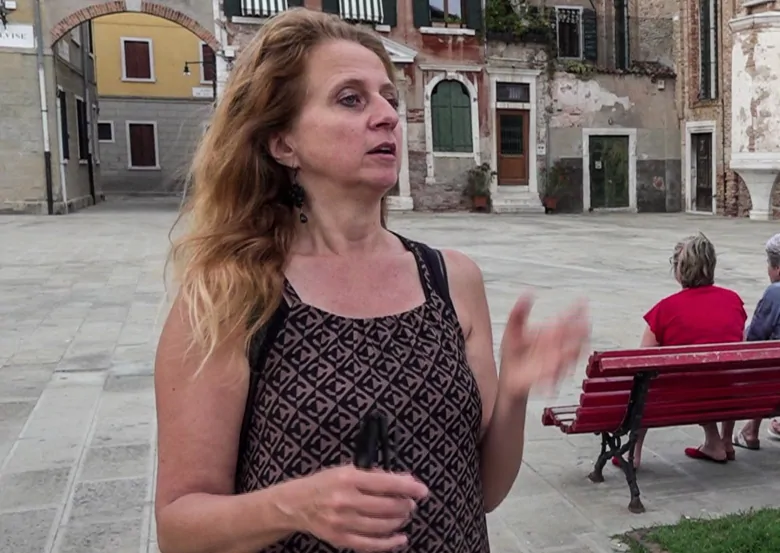In the 1970s, upwards of 150,000 people resided in Venice, but today it’s home to just over 50,000, with the population shrinking by 1,000 each year. Without tourists, there is hardly anyone left in the lagoon city.

Francesco Penzo stands straddling a sandolo, a low boat Venetians once used for shooting ducks. He manoeuvres a long paddle deep into the water, steering the vessel around the corner of a canal in the former working-class neighbourhood of Cannaregio, the only sound the creaking of wood and birdsong echoing above.
Cannaregio is one of the few areas in Venice that had not been overtaken by tourists and souvenir shops before the devastating “acqua alta” flooding in November, followed by the coronavirus quarantine in March that locked down Italy for more than two months.
Yet as we glide past a row of gorgeously crumbling palazzi, Penzo points out a small brick building ahead that he says encapsulates the real crisis his city faces: not COVID-19 but what COVID-19 has made painfully clear.
“That’s where I live,” says the housing activist, who works in the insurance business for his day job. “Of the 10 apartments in there, four are Airbnbs, four are second homes and only two have people actually living in them.”
Without tourists, in other words, there is hardly anyone left in Venice.
WATCH | The sights and sounds of a Venice canal
Francesco Penzo manoeuvres his sandolo along a peaceful canal in Venice, through the former working-class neighbourhood of Cannaregio. 0:54
It wasn’t always this way.
In the 1970s, upwards of 150,000 people resided in the lagoon city. Today, it’s home to just over 50,000, with the population shrinking by 1,000 each year — half from older people dying, half from people leaving due to soaring housing costs and lack of job opportunities.
A massive flood in 1966 triggered the initial exodus, with Venetians fleeing to the nearby mainland city of Mestre, part of the Venice municipality, and staying. Former residents began converting their Venice homes into short-term rentals and hotels; the advent of low-cost airlines and Airbnb did the rest.
“When I grew up here, Venice was crowded, but crowded with Venetians,” says Aline Cedron, an editor raising two teenagers in Cannaregio. Cedron is one of 3,000 members of Gruppo 25 Aprile, the latest incarnation of various citizens’ groups that have been trying for several decades to return Venice from being what they call a 15th-century theme park to the vibrant, lived-in city it once was.
‘A different way of life’
Here in Cannaregio, for a moment, you can almost believe the city is alive and well. We stroll through a lush, walled park with children scrambling up slides, then past a square with elderly residents chatting amiably on benches as kids kick a ball against a wall.
It’s hard not to feel a pang of envy to see how relaxed urban life can be — not only without tourists, but without the noise, exhaust and danger of cars. Neighbours congregate at the end of the day in local cafés for bright orange spritzes, the Venetian cocktail now popular around the world. Crime throughout the whole lagoon city is practically non-existent.

“Venice is an example of such a different way of life for the entire world, and in my experience, a high quality of life. Having to walk everywhere, you are constantly meeting people, and the social aspect of this life is very, very precious,” Cedron says.
Precious, but with a mono-economy of mass tourism that is perilously lacking in resilience, say even those who depend on that economy.
Across Venice’s once h

